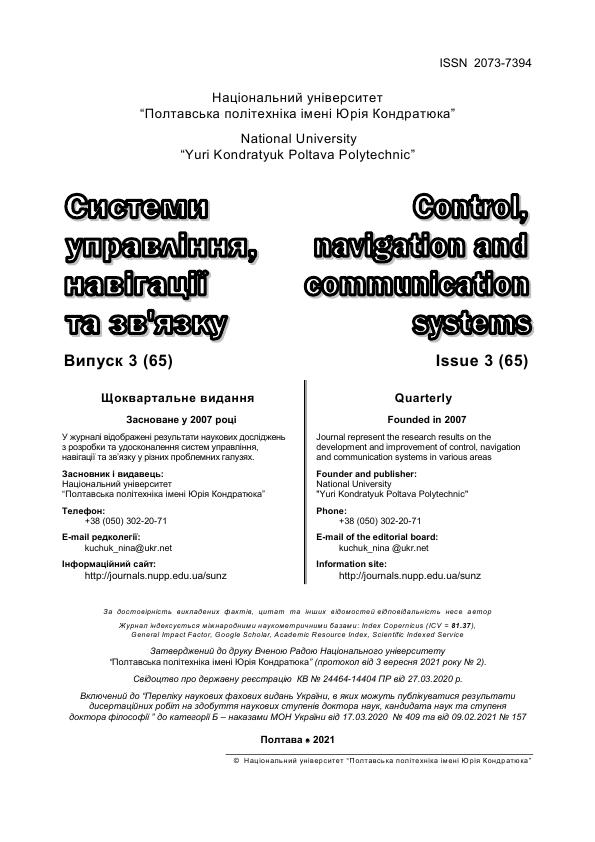SYNTHESIS TRENDS OF FORECASTING USING INDUCTIVE MODELING METHODS
DOI:
https://doi.org/10.26906/SUNZ.2021.3.108Keywords:
multiparameter functions, inductive modeling, group method of data handling, visualization, trends, optimization of results, MatlabAbstract
Modern development of computer technology and the possibility of implementing calculations in parallel allow to solve increasingly large-scale problems of numerical modeling. The development of multiprocessor computing and parallel computing makes it important to solve problems of optimization analysis. The optimization analysis is based on the mass solution of inverse problems when the defining parameters of the considered class of problems change in certain ranges. Thus, calculations of not only direct problems where it is necessary to model the phenomenon at the known initial data, but also calculations of inverse problems where it is necessary to define on what defining parameters there is this or that phenomenon become more and more demanded. This formulation requires multiple solutions of direct problems and solving the problem of optimization analysis and construction of predictive trends. Sets of multidimensional parametric data in the paper are considered as numerical solutions of the optimization problem. The construction of predictive trends is implemented on the basis of the group method of data handling as a direction of induction modeling. The methodology of visualization of results of calculation of parametric functions is realized. The scheme of Data Mining with application of methods of visualization by means of the Matlab software environment is describedDownloads
References
Чарльз Генрі Едвардс, Девід Е. Пенні. Диференціальні рівняння і проблема власних значень: моделювання та обчислення за допомогою Mathematica, Maple і MATLAB Differential Equations and Boundary Value Problems: Computing and Modeling. - 3-е изд. - М.: «Вільямс», 2007. - 397 с, ISBN 978-5-8459-1166-7.
С.П. Іглін. Математичні розрахунки на базі Matlab. Видавництво "BHV-Санкт-Петербург" 2005р. 640 с.
Є.Р. Алексєєв, О.В. Чеснокова. Рішення задач обчислювальної математики в пакетах Mathcad 12, MATLAB 7, Maple 9. Серія: Самовчитель. Видавництво: НТ Пресс, 2006р. 496 с. ISBN 5-477-00208-5.
Ивахненко А.Г. Индуктивный метод самоорганизации моделей сложных систем. – Киев: Наук. думка, 1982. – 296 с.
Samoilenko O., Stepashko V. A method of Successive Elimination of Spurious Arguments for Effective Solution of the Search-Based Modelling Tasks // Proc. of the II Int. Conf. on Inductive Modelling, Sept. 15-19, 2008, Kyiv, Ukraine. – IRTC ITS NASU, Kyiv, 2008. – P. 36-39.
Stepashko V., Bulgakova O. Generalized Iterative Algorithm GIA GMDH // Proc. of the 4th Int. Conf. on Inductive Modelling ICIM-2013, Sept. 16-20, 2013, Kyiv, Ukraine. – Kyiv: IRTC ITS NASU, 2013. – P. 119-123.
Yefimenko S., Stepashko V. Intelligent Recurrent-and-Parallel Computing for Solving Inductive Modeling Problems // Proc. of 16th Int. Conf. on Computational Problems of Electrical Engineering CPEE’2015, Lviv, Ukraine, September 2-5, 2015. – Lviv: LNPU, 2015. – P. 236-238.
Степашко В.С. Концептуальные основы интеллектуального моделирования // УСиМ. – 2016. – No 4. – С. 3-15.
Ефименко С.Н. Построение систем прогнозных моделей многомерных взаимосвязанных процессов // УСиМ. – 2016. – No 4. – С. 80-86.
Stepashko V., Moroz O. Hybrid Searching GMDH-GA Algorithm for Solving Inductive Modeling Tasks // Proc. of the 1st IEEE International Conference on Data Stream Mining & Processing, 23-27 August 2016, Lviv, Ukraine. – P. 350-355.
Self-organizing methods in modeling: GMDH type algorithms / Ed. S.J. Farlow. – New York, Basel: Marcel Decker Inc., 1984. – 350 p.
Bodyanskiy Ye., Zaychenko Yu., Pavlikovskaya Ye. The Neo-Fuzzy Neural Network Structure Optimization Using the GMDH for the Solving Forecasting and Classification Problems / Proc. of the 3rd Int. Workshop on Inductive Modeling IWIM–2009, 14–19 Sept. 2009, Krynica, Poland. – Prague: Czech Techn. Univ., 2009. – P. 100–107.
Булгакова О.С., Зосімов В.В., Степашко В.С. Програмний комплекс моделювання складних систем на основі ітераційних алгоритмів МГУА з можливістю мережевого доступу // Системні дослідження та інформаційні технології. – 2014. – No 1. – С. 43-55.
Павлов А.В. Проектирование системы автоматизированной структурно-параметрической идентификации // Індуктивне моделювання складних систем. – Вип. 7. – К.: МННЦ ІТС НАНУ, 2015. – С. 202-219.
[Stepashko V., Samoilenko O., Voloschuk R. Informational Support of Managerial Decisions as a New Kind of Business Intelligence Systems. – Computational Models for Business and Engineering Domains / G.Setlak, K.Markov (Eds.). – Rzeszow, Poland; Sofia, Bulgaria: ITHEA, 2014. – Р. 269-279.
Zosimov V., Stepashko V., Bulgakova O. Inductive building of search results ranking models to enhance the relevance of the text information retrieval // Proc. of the 26th Intern. Workshop “Database and Expert Systems Applications”, 1-4 Sept., Valencia, Spain / Ed. by Markus Spies at al. – Los Alamitos: IEEE Computer Society, 2015. – P. 291-295.
Оленєв М.М., Печонкін Р.В., Ченців А.М. Паралельне програмування в MATLAB і його додатки. М .: ВЦ РАН. 2007. 120 с. - ISBN 5-201-09865-7
E. Skakalina. INFORMATION TECHNOLOGY FOR BUILDING A MODEL OF FINANCIAL FORECASTING / E.Skakalina // Proceedings of the 16th INTERNATIONAL SCIENTIFIC CONFERENCE INFORMATION TECHNOLOGIES AND MANAGEMENT 2018. April 26-27, 2018. ISMA University, Riga, Latvia, P.195-196.
Optimization Toolbox - Оптимізація [Електронний ресурс]. - 2021. - Режим доступу: http://matlab.exponenta.ru/optimiz/index.php
Skakalina E. Investigation of intelligent technologies for formation forecasting models / Elena Skakalina // International Journal of Engineering & Technology.- 2018.- 7(3.2 ). – P.413-418. DOI: 10.14419/ijet.v7i3.2.14563




